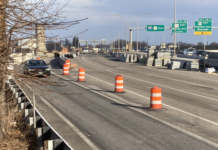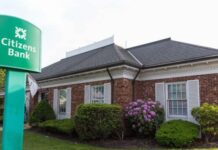
Steve Durkee’s first job was parking cars for a restaurant in Massachusetts. Thirty eight years later he’s a Providence developer with Cornish Associates and just completed his first deal – buying, yes, a parking garage.
Durkee started his job as a senior associate at Cornish in May, after leaving Durkee, Brown, Viveiros & Werenfels Architects, the company he started with a former college classmate. Cornish is the company behind the redevelopment of the Peerless Building, the O’Gorman Building and the Westminster Lofts, among others. Durkee recently spoke with Providence Business News about his new job and the future of downtown Providence.
PBN: Why did you leave Durkee Brown?
DURKEE: I started Durkee Brown 16 years ago and it was an incredibly rich experience. … But I’d been thinking there was another chapter of some kind and I didn’t know what it was. In talking with [Cornish President and CEO] Buff Chace – who I’ve known for more than 15 years – he was talking about some interest he had in continuing what we had done [in downtown Providence] before. We had renovated seven building together. He was thinking he wanted to continue that work and it had such a huge appeal to me. I would have been working with him as an architect and he was kind of looking for additional staff and asked me if I knew anybody. Pretty soon I just said maybe I’ll be able to help because I’d been doing development.
I like the development side of our business in addition to the creative side.
PBN: Where is Cornish headed with its development projects?
DURKEE: Part of the thinking is that we did this work in the late ’90s and 2000s and that we built 197 apartments and 50,000 square feet of commercial space and that maybe that footprint really isn’t big enough to be really sustaining. So we need to enlarge the footprint a little bit and do another 150 apartments so there’s more people living downtown, there’s more activity downtown. Perhaps some office space – although there’s a lot of vacant office space – more retail, more restaurants.
PBN: Isn’t this a challenging economic time to dive into the development business?
DURKEE: I think there are always opportunities as well. We know that construction costs are historically low right now, the prices of buildings are different than they used to be. So they’re not easy to do but they’re not impossible either, depending on what your motivations are and what your objectives are.
PBN: So what is the future of Providence development?
DURKEE: Let’s just think about the next 10 to 20 years. I think that’s the window. You think about the growth that’s happening in the Promenade and that’s just been tremendous. There are still businesses trying to locate there.
You look at the opportunities that are out there around the Interstate 195 land when the highway comes down. That’s 19 acres. My personal feeling is that we really need to look to the institutions to help us grow through this next stretch of time, Rhode Island Hospital, Brown, Johnson & Wales. They’re going to be the driving force in this knowledge economy we’re talking about. The [Brown] medical school is the first example. Johnson & Wales has great ambitions to enlarge its Providence campus.
So I think the 10-year window is promising. The 20-year window is exciting.
PBN: What makes the 20-year window exciting?
DURKEE: It’s because the institutions work a little bit slower than most. You won’t see buildings just popping up every year. But they’ve got big plans. They’ve announced the College of Engineering at Brown and that’s a huge thing. … And we know that they don’t have much room up on College Hill. So they’ve clearly identified this area as where they want to be and put their stake in the ground with the medical school.
DURKEE: Well, they need places to live, there’s going to be more development happening around the buildings. There’s just going to be more opportunity. Institutional growth will drive other sectors of growth as well. It’s proven everywhere in the country. It’s just a little bit more of everything.
PBN: Outside of Cornish you also chair the Providence City Plan Commission, which you also chaired while at Durkee Brown. Is it a conflict to be a developer and serve on the commission?
DURKEE: I’m not sure why because it’s less now. The planning board doesn’t really do anything in downtown Providence. We don’t have any projects that take place in downtown Providence. That’s covered by the Downcity Design Review [Committee], Historic District Commission and other boards. So my conflicts are project by project. …
So I would actually argue the opposite. That my experience in all of these different things makes my ability to look at this work even stronger. I don’t see it [as a conflict] and I think most people who come before the board don’t see it that way. …
I just happen to be very involved in the city of Providence in terms of the work that I’ve been doing for the past 20 years so I’m not sure if that’s good or bad. But I think that it’s going to be much easier for me now, and even have fewer conflicts because I won’t have a role as an architect. In other words, they won’t be my projects anymore because I don’t work outside of downtown. •
INTERVIEW
Steve Durkee
POSITION: Senior associate at Cornish Associates
EDUCATION: BFA and B.Arch. from Rhode Island School of Design, 1986
BACKGROUND: After being laid off as an architect fresh out of college, Steve Durkee started a nonprofit, worked for a design-build company and did side jobs as a carpenter. In 1992, he started as an architect again and in 1994, formed Durkee Brown Architects along with his former RISD classmate, Doug Brown. He left what is today called Durkee Brown Viveiros Werenfels Architects in May 2010 to join Cornish Associates. He also chairs the Providence City Plan Commission.
FIRST JOB: Parking cars at the Chart House restaurant at age 16
RESIDENCE:
Providence
AGE: 54












